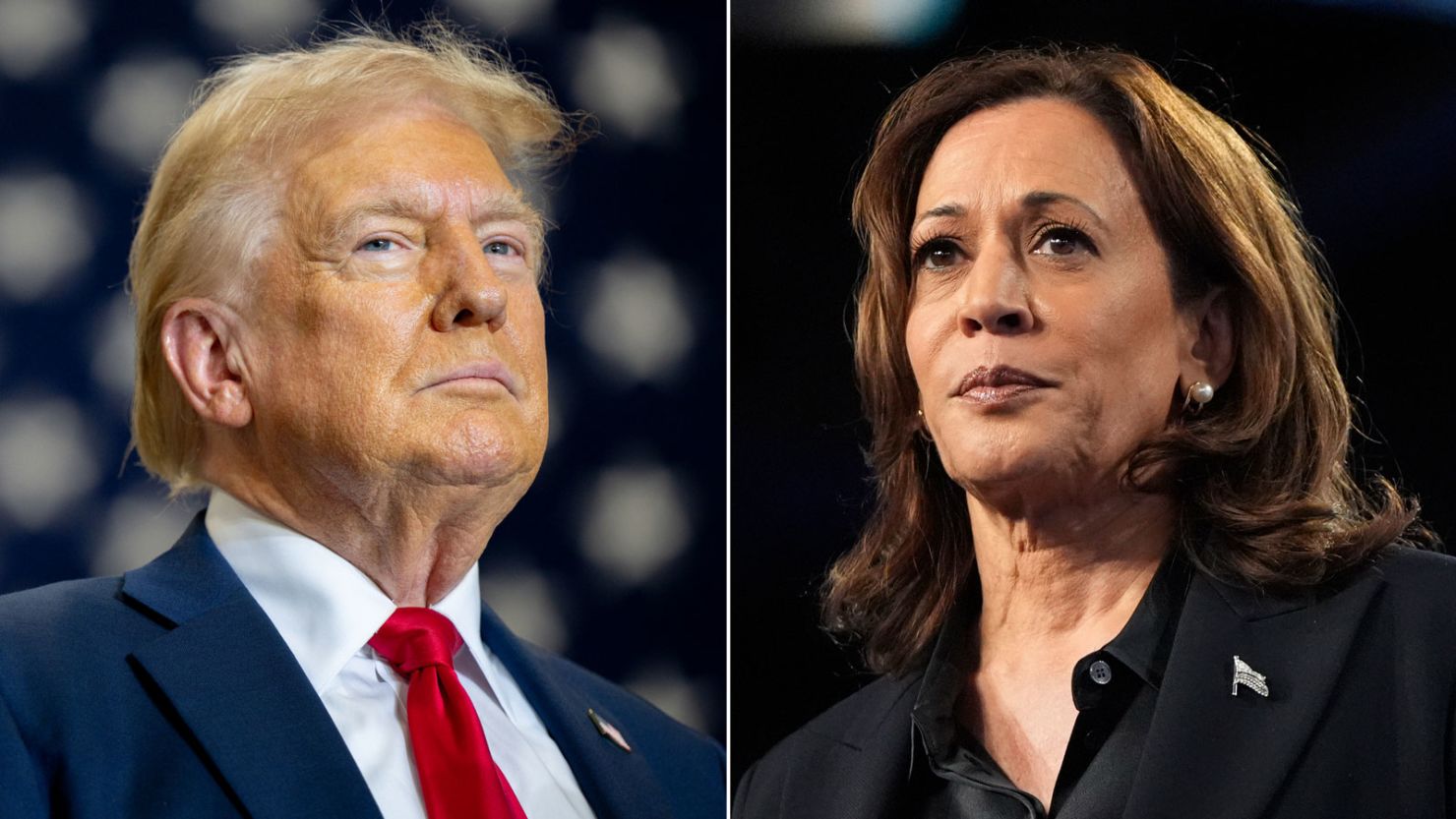Democrats have outspent Republicans in TV advertising for the presidential race by wide margins in key swing states over the three months since Vice President Kamala Harris launched her campaign, buoyed by record-breaking grassroots fundraising and outside groups funded by deep-pocketed donors.
That’s set to change, however, in the final stretch of the campaign. According to a CNN analysis of AdImpact data covering spending and TV reservations from October 22 through Election Day, Republicans are poised to seize the edge in a few important battlegrounds as Donald Trump’s campaign and his own wealthy supporters counter with a late surge.
Through it all, Pennsylvania has loomed large as the top target for both sides: The commonwealth alone has accounted for roughly 22% of all ad buys during the condensed general election matchup, including bookings through Election Day. (Advertising from both sides over the 15 weeks since President Joe Biden dropped out, including future reservations, has crossed $2 billion.)
Both Harris and Trump, and their allies, have identified Pennsylvania as the premier battleground of the election, spending more there than in any other state. In fact, the Keystone State saw about $100 million more in advertising than the second-ranked state, Michigan. Democrats have outspent Republicans in the Keystone State by about $37 million over the past three months.
Underscoring that status, both sides have been running campaign ads tailored to court Pennsylvania voters. Harris’ campaign has produced multiple spots featuring Philadelphians touting her appeal, while Trump’s campaign has run ads highlighting the state’s lucrative fracking industry.
Pennsylvania, Michigan and Wisconsin make up the Democratic “blue wall” of Great Lakes states that represent Harris’ best path to locking down the 270 electoral votes needed to win the presidency. In Michigan, Harris and her allies have outspent Republicans by nearly $58 million in the three months since the vice president entered the race – their largest lead in any of the swing states. In Wisconsin, the Democratic edge is about $27 million.
All in all, Pennsylvania, Michigan and Wisconsin accounted for about 42% of all Democratic presidential ad buys between July 22, the day after Biden dropped his reelection bid, and October 21, two weeks before Election Day.
Final sprint to November 5
After being outspent by Democrats across all seven battleground states over the past three months, however, Republicans are currently set to gain the advantage in Pennsylvania, Wisconsin and North Carolina in the campaign’s final two weeks.
There are several qualifiers – future ad bookings are subject to change. Advertisers that booked early are spending less than advertisers fighting for limited TV slots at the end of the race. And the ad spending totals include buys from both candidates and outside groups, and candidates are charged less for advertising than outside groups, meaning some dollars go further than others.
Crucially, as well, Democrats have largely outspent Republicans on digital advertising, which, unlike TV advertising, is not booked far in advance, offering Harris and her allies another avenue to erode Republicans’ lead.
Still, after being dramatically outspent by Democrats across all seven battlegrounds, Trump and his allies’ ability to match or in some cases exceed the other side’s ad spending represents a significant shift in the balance from earlier in the campaign.
In Pennsylvania, Republican advertisers are set to spend nearly $58 million over the final two weeks, over $10 million more than Democratic advertisers, as both sides make a fierce push for the so-called linchpin state.
In Wisconsin, Trump and his allies had about $25 million worth of ad time reserved, roughly $4 million ahead of Democrats, threatening to undercut Democratic efforts to hold their blue wall. Earlier this week, MAGA Inc., one of the leading pro-Trump super PACs, added $11.5 million to its reservations in the Badger State for the final two weeks, underscoring the Republican effort to flip the state.
And in North Carolina, the target of a major advertising push from Harris and her allies for much of October, Republicans are set to outspend Democrats by about $1.9 million over the final two weeks.
Democrats are poised to maintain their ad spending advantage in the other four top battlegrounds, leading Republicans by about $1.1 million in Michigan, about $8.5 million in Georgia, about $3.1 million also in Arizona, and about $1.6 million in Nevada.
In total, Democrats – the Harris campaign and outside allies – had about $208 million in ad bookings over the final two weeks, including about $33 million in national ad reservations, while Republicans had about $181 million, including $6.8 million in national bookings.
But despite Democrats’ overall edge, Trump’s campaign is set to outspend Harris’ campaign on advertising during those final two weeks, about $67 million to $53 million, an important advantage given that candidates get more favorable ad rates than outside groups.
In terms of the outside groups supporting their efforts, Democrats are poised to outspend Republicans by about $155 million to $114 million, with FF PAC, the leading pro-Harris super PAC, expected to play a pivotal role as the largest advertiser in the final sprint, accounting for about $129 million worth of ad spending.




